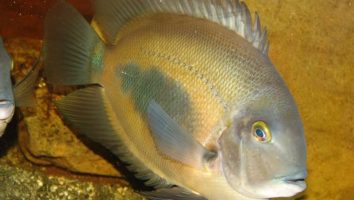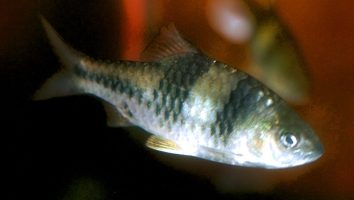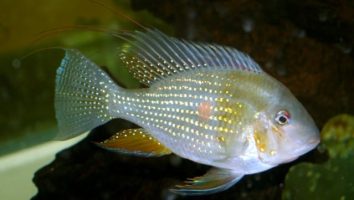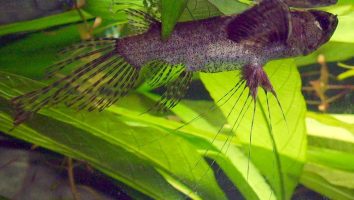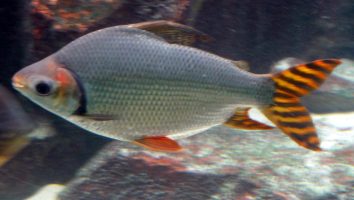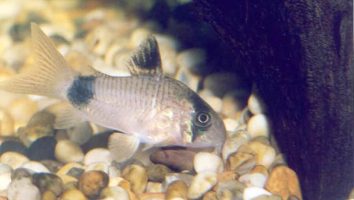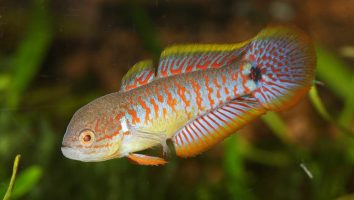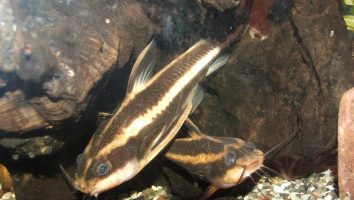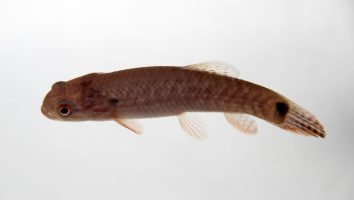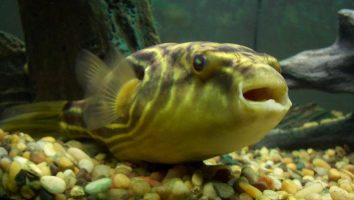The Rosy Barb is a peaceful and hardy fish that is perfect for beginner aquarists. They are a very active fish that will add a splash of color to your tank.
Rosy Barbs are very easy to care for and are very adaptable to different water conditions. They are also very tolerant of other fish.
However, there are a few things you should know about Rosy Barb care before you add them to your tank. In this guide, we will go over everything you need to know about Rosy Barb care.
Table of contents
Species overview
The rosy barb (scientific name: Puntius conchonius) is a freshwater fish that’s native to South and Southeast Asia. In the wild, they can be found in countries like India, Pakistan, Nepal, and Bangladesh.
They prefer habitats with little to no current, such as ponds, lakes, and slow-moving rivers. This is because rosy barbs are not strong swimmers and can easily be swept away by faster moving water.
Rosy barbs are omnivores and in the wild, they will eat a variety of plant matter and small insects. In captivity, they should be fed a diet of high-quality pellets or flakes as well as live or frozen foods.
Rosy barbs are a popular choice for beginner aquarium hobbyists because they are relatively easy to care for and are very peaceful fish. They are also very active and love to swim around, which makes them fun to watch.
Appearance
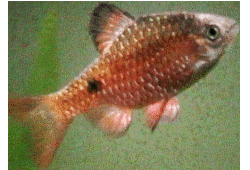
The Rosy Barb is a stunning freshwater fish that is a bit of a mystery. These fish are very popular in the aquarium trade, but their origins are unknown for certain.
What we do know is that they’re native to South Asia and they were first described in 1814.
The Rosy Barb is a beautiful fish that has a unique coloration. The body of the fish is a golden color with faint rosy stripes running down the length of the fish. The fins are a translucent pink color.
The males of this species are more colorful than the females. The colors on the males are more vibrant and the stripes are more pronounced.
The fins on the Rosy Barb are rather standard for a barb. The dorsal fin is located about two-thirds of the way back on the body and it has a rather tall and thin appearance.
The anal fin is located just behind the dorsal fin and it’s about the same size. The caudal fin is forked and relatively large in comparison to the rest of the fins.
The pectoral fins are located on the sides of the fish and they’re rather small. The ventral fins are located just behind the pectoral fins and they’re also small in size.
Lifespan
Rosy barbs have an average lifespan of 5 to 10 years. However, there are several reports of them living up to 15 years in captivity.
As with most fish, their lifespan is greatly influenced by the quality of care they receive. Things like water quality, stress, and diet all play a role in how long these fish will live.
Size
Rosy barbs can grow to be up to 6 inches long, but they are usually only about 4 inches long. These fish are relatively small, so they don’t need a lot of space to swim around.
Tank
Tank Size
Rosy barbs do best in groups of at least 6 fish and should have a minimum tank size of 20 gallons. If you’re looking to keep a school of 12 or more fish then you should have a tank that’s 30 gallons or larger.
Rosy barbs are a peaceful fish but they do have a reputation for being a little nippy. They’re not agressive but they may nip at the fins of slower moving fish or long-finned fish.
Water Parameters
The Rosy barb is a hardy fish that can tolerate a wide range of water parameters. That said, it’s still important to maintain consistency to ensure a long and healthy life.
The ideal water parameters for Rosy barbs are:
- Water temperature: 72 to 79 degrees Fahrenheit
- pH levels: 6.5 to 7.5
- Water hardness: 5 to 20 dGH
- Alkalinity Levels: 3-10 dKH
What To Put In Their Tank
When it comes to setting up the inside of an aquarium for Rosy Barbs you can be as creative as you want. There aren’t any specific things that this species NEEDS to have, which gives you plenty of options.
We recommend some of the standard decorations that you find in a lot of freshwater tanks. There are a ton of great plants you can include (like hornwort or water wisteria). You can even throw in some floating aquarium plants too!
Rocks, driftwood, and caves are all suitable as well. It’s important to avoid going overboard with this since these fish like some room to swim.
Also, if you’re keeping your Rosy Barbs in a smaller tank then it’s going to be difficult to include a lot of this stuff anyway.
A classic gravel substrate is always a good choice, but you can do with something soft and sandy if needed too (use other species you keep as a guide with this).
Common Diseases
The Rosy barb is a very hardy fish that is resistant to most diseases. However, there are still a few illnesses that can affect this species.
The most common disease that affects Rosy barbs is ich. This is a very contagious disease that is caused by a parasite. It can quickly spread through a tank and kill off a lot of fish if it’s not treated quickly.
The most obvious symptom of ich is the presence of white spots on the body of your fish. If you see this, it’s important to act quickly and begin treatment.
Another disease that can affect Rosy barbs is Hole-in-the-Head disease. This is an illness that is caused by poor water quality and the presence of activated carbon in the tank.
It will present itself as one or two pits/holes in the skin of your fish’s head. While it’s almost always curable, it will usually leave some scarring on your poor fish!
As always, the best way to prevent these diseases is to maintain a clean and healthy environment for your fish. A tank with clean water and stable conditions will go a long way in keeping your fish healthy and disease-free.
Behavior & Temperament
Rosy barbs are a schooling fish, which means they do best when they’re kept in groups. They’re very social creatures that love to swim and play together.
In the wild, these fish live in large rivers with plenty of space to swim. They’re known for being great jumpers, so it’s important to keep them in a tank with a tight-fitting lid.
Although they’re peaceful fish, Rosy barbs can be a bit nippy. They’re known to nibble on the fins of their tank mates. This is especially true if the other fish are slow-moving or have long fins.
Rosy barb schooling
The good news is that this type of behavior is usually only a problem when the fish are kept in a small tank. They need a lot of space to swim, so a crowded tank will only aggravate their nipping habits.
When it comes to temperament, Rosy barbs are relatively easy-going. They’re not overly active, so they won’t stir up trouble in the tank. As long as they have plenty of space to swim and a few hiding places, they’ll be happy.
Tank Mates
Rosy barbs are social creatures that do best in groups. A single fish is likely to be stressed out and may not do well in the long run.
Rosy barbs are also peaceful fish. They’re not known to be nippy or aggressive, so they make good tank mates for other peaceful fish.
Some compatible species include:
- Tetras
- Danios
- Guppies
- Mollies
- Platies
- Swordtails
Breeding
Rosy barbs are easy to breed and don’t require any special care or setup. Just follow these simple steps and you’ll be successful.
Start by adding a group of 4-6 fish to your tank. It’s best to have more females than males. Then, let them acclimate to their new environment for a week or so.
After that, begin feeding them a high-quality diet. Live foods are best, but frozen will work in a pinch.
As they start to get comfortable, you’ll notice the males start to chase the females. This is normal behavior.
Eventually, the females will lay their eggs in a secluded area of the tank. The males will then fertilize them.
At this point, it’s best to remove the adults. They may eat the eggs or fry if you leave them in.
The eggs will hatch in about a week. Once they do, you can start feeding them baby brine shrimp or other small live foods.
Conclusion
The Rosy Barb is a great fish for beginner fishkeepers. They are relatively easy to care for and are very hardy. They are also very active fish that will add some excitement to your tank.
While they are not the most colorful fish, they more than make up for it in personality. If you are looking for a fun and active fish to add to your tank, the Rosy Barb is a great choice!

